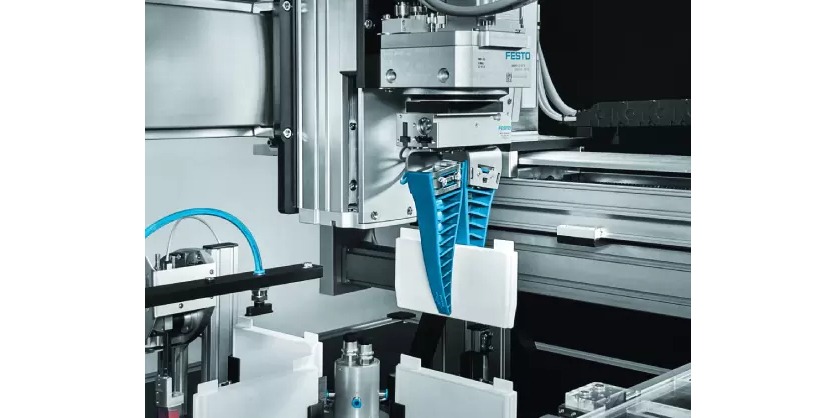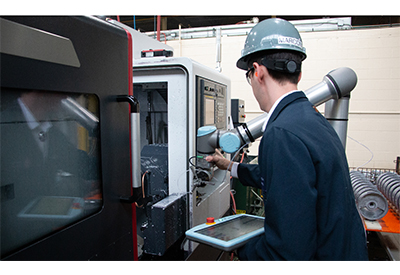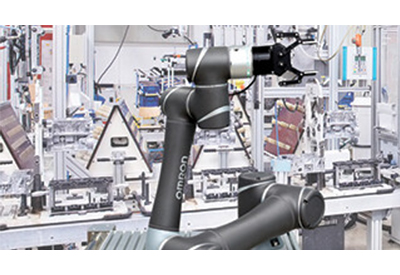Grippers 101: Gripper Types and Their Applications
February 18, 2025

By Owen Hurst
Types of Robotic Grippers
With so many gripper types available on the market, it can be difficult to know which on is right for your application. In this guide, using Festo’s grippers as examples, we present an overview of the various types of grippers and some of their suited applications.
Festo’s grippers can be grouped into three categories: mechanical, vacuum, and universal (also known as soft or adaptive grippers). Each type of gripper has its unique features and benefits. Looking at each type in turn, this article highlights their attributes and point out some of the typical automated handling applications they are best suited for.
Mechanical Grippers
Mechanical grippers are commonly used in industrial automation and manufacturing processes. They are suitable for handling objects with defined shapes and sizes. Applications include pick-and-place operations, assembly lines, packaging, and material handling in industries such as automotive, electronics, end of line packaging and intralogistics.
Mechanical Gripper Features:
- Mechanical Actuation: Operated through mechanical means, such as gears, levers, compressed air, or springs, without the need for external electrical power sources.
- Variety of Designs: Available in various configurations, including parallel, angular, radial, concentric and multi-finger grippers, to accommodate different shapes and sizes of objects.
- Robustness: Designed to withstand harsh environments and heavy loads, making them suitable for industrial applications which require millions of cycles.
- Customizable Jaws: Jaws can often be customized or replaced to suit specific gripping needs.
Mechanical Gripper Benefits:
- High Speed: Quick actuation increases productivity by reducing cycle times in manufacturing processes.
- Strong Grip: Capable of handling heavy loads due to the powerful force generated by pneumatic systems.
- Versatility: Suitable for a wide range of applications, from assembly and packaging to material handling.
- Reduced Risk of Damage: Adjustable gripping force allows for careful handling of fragile items, minimizing the risk of damage.
- Energy Efficiency: When designed properly, mechanical gripping systems can be energy-efficient, especially in high-speed applications.
Vacuum Grippers
Vacuum grippers utilize suction to hold and manipulate objects. Traditional vacuum cups are ideal for handling objects with smooth, flat surfaces, such as glass, metal sheets, and corrugated cases. Festo also offers specialty vacuum cups (Foam and Bernoulli grippers) for rougher surfaces, delicate, and porous workpieces. Vacuum grippers find applications in industries like logistics, warehousing, food processing, and packaging. They are often used in automated systems during primary, secondary, and tertiary packaging.
Vacuum Gripper Features:
- Vacuum Generation: Utilize vacuum suction to grip objects, typically created by a vacuum pump or venturi system.
- Flexible Suction Cups: Equipped with various types and sizes of suction cups that can conform to different shapes and surfaces.
- Lightweight Design: Often designed to be lightweight, which can enhance the efficiency of robotic arms and reduce energy consumption.
- Quick Release: Allow for rapid release of objects, facilitating fast-paced operations.
- Sensor Integration: Can be fitted with sensors to monitor grip status and detect the presence of objects.
- Multiple Configurations: Available in different configurations, including single and multi-suction cup designs, to accommodate various applications.
Vacuum Gripper Benefits:
- Versatility: Effective for handling a wide range of materials, including flat, smooth, and porous surfaces.
- Gentle Handling: Ideal for delicate items, as vacuum grippers can provide a soft touch without damaging the surface.
- Increased Efficiency: Fast and reliable gripping and releasing capabilities enhance productivity in automated processes.
- Adaptability: Can easily adapt to different shapes and sizes of objects, making them suitable for diverse applications.
- Reduced Need for Mechanical Parts: Fewer mechanical components can lead to lower maintenance requirements and increased reliability.
- Cost-Effective: Often more economical than other gripping technologies, especially for high-volume applications.
Adaptive Grippers
Adaptive grippers can adjust their shape or grip according to the object being handled. They are versatile and suitable for handling objects of various shapes, sizes, and materials. Adaptive grippers find applications in industries such as robotics, food & packaging, Industrial Automation and Logistics. They are used in tasks like grasping irregular objects, delicate handling, and collaborative robot applications.
These gripper systems are currently being used in a wide range of industries, including automotive, electronics, logistics, Life Science, Food Processing and Packaging, Injection Molding and many more. The specific applications vary depending on the industry and requirements of the task. It is important to note that the use of gripper systems is not limited to these industries, and their applications continue to expand as automation technology advances.
Adaptive Gripper Features:
- Versatility: Capable of handling a wide range of objects, making them suitable for diverse applications in various industries.
- Reduced Risk of Damage: The soft, adaptive nature allows for gentle handling of delicate items, minimizing the risk of damage.
- Increased Efficiency: Quick adaptability to different objects can streamline operations and reduce cycle times.
- Improved Grip Reliability: Enhanced feedback mechanisms ensure a secure grip, even on challenging surfaces or shapes.
- Cost-Effective: Can reduce the need for multiple specialized grippers, saving costs in equipment and maintenance.
- Enhanced Automation: Their ability to adapt to varying tasks makes them ideal for automated processes, improving overall productivity.
- Part Positioning Compliance: The soft fingers provide compliance when parts are being picked or placed, e.g. picking a polymer part from the IMM during ejection
Adaptive Gripper Benefits:
- Flexible Jaws: Equipped with soft, flexible jaws that can conform to the shape of the object being gripped.
- Sensor Integration: Often include sensors (like force, pressure, or vision systems) to provide feedback on grip status and object characteristics.
- Multi-Finger Design: Typically features multiple fingers or gripping points that can adjust independently to grasp irregularly shaped items.
- Advanced Control Systems: Utilize sophisticated control algorithms to adapt grip strength and position in real-time.
- Lightweight Materials: Made from lightweight materials to enhance efficiency and reduce the load on robotic arms.
- Modular Components: Many adaptive grippers are designed to be modular, allowing for easy customization and replacement of parts.
Conclusion
With all the choices available when it comes to selecting a gripper for your automated handling application, it can be challenging to figure out which one is best for your application. Festo makes it easier than ever to help you overcome these challenges with their vast portfolio of grippers, accessories, online tools, and support.



